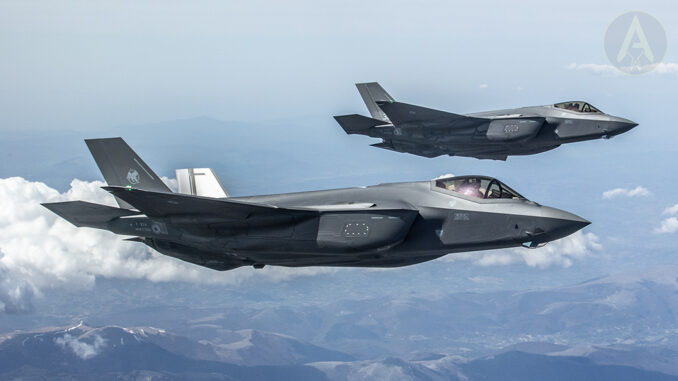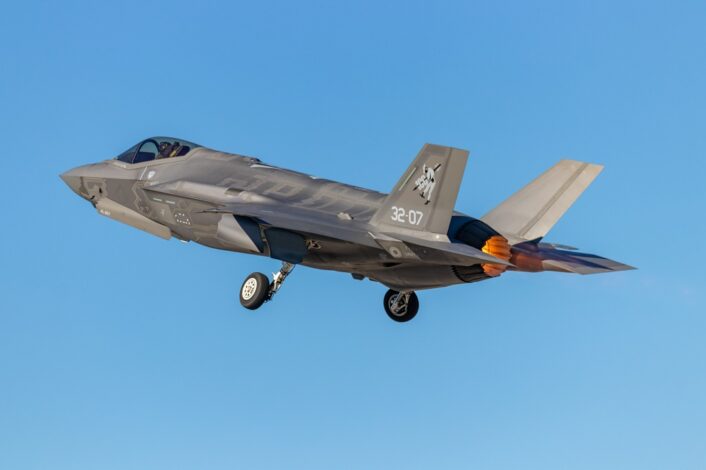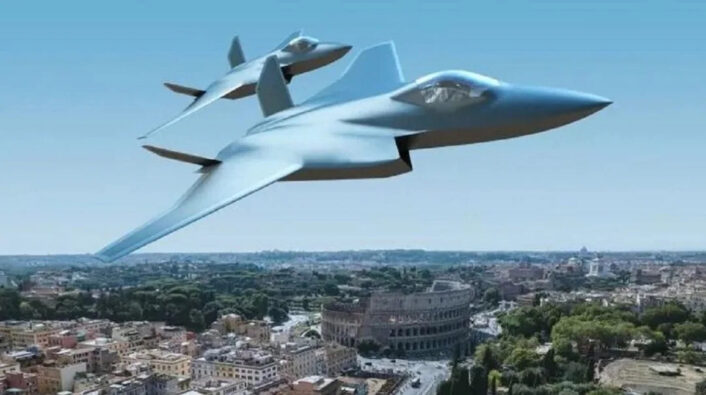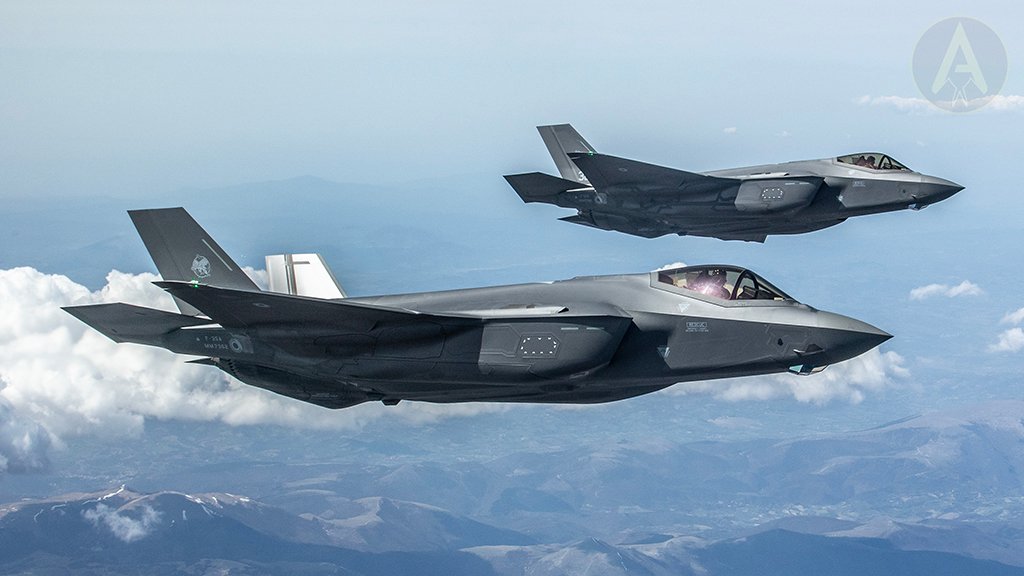[ad_1]

“If we want to be relevant, we need technology and adequate numbers” the Chief of Staff of the Italian Air Force said.
On Mar. 8, 2023, the Aeronautica Militare (Italian Air Force) Chief of Staff, Gen. Luca Goretti talked to the Defense Commission of the Camera dei Deputati (lower house of Italian parliament) and explained the guidelines he intends to promote in order to maintain and increase the efficiency, effectiveness and relevance of the Italian Air Force in Italy and in the World.
Several interesting things were outlined during the hearing that was opened by a one-minute silence in mourning for the two pilots who have lost their lives in the mid-air collision of two U-208M aircraft near Guidonia on the previous day. Goretti thanked the two officers, as their Chief of Staff and also as their colleague, for what they have done for the Italian Air Force and the country.
The CinC of the Italian Air Force started his speech talking about the 100th anniversary that will be celebrated in a few weeks, on Mar. 28, 2023, through exhibitions, air shows, conferences, scientific and historical symposiums across Italy. Reflecting on the past and looking at the future, Gen. Goretti recalled the many choices that have proved, in fact, successful and forward-looking, as the decision to partner with the industry to establish the IFTS (International Flight Training School) using the T-346 Master and promoting a revolutionary collaboration State-Industry, and the participation in the Joint Strike Fighter (JSF) international programme.
The need for more F-35s.
“The Italian Air Force has always believed that the F-35 aircraft is the most advanced weapon system available today, crucial to continue to guarantee capabilities that are irreplaceable for an Air Force that aspires to be strategically relevant and operationally decisive, not only in carrying out the daily national Air Defense mission, but especially to operate in conflict scenarios where we might be called upon to counter a well-equipped and heavily armed opponent determined to impose itself by any means possible.”
“A hypothesis, the latter, which many, since the beginning of the 21st century, had dangerously set aside as “anachronistic” and no longer repeatable, but which the recent history has instead imposed as dramatically current. Well, with perseverance, competence and experience [..] the Air Force has always firmly advocated the need to equip itself with such an advanced weapon system, even when the F-35 was unjustly “demonized” by many as “a useless waste of taxpayers’ resources”, underestimating how the air battle, more than any other sector, has always been a clash between technologies.”

“The invasion of Ukraine by the Russian Federation a year ago suddenly and disruptively brought back into our lives ghosts of the past now forgotten, bringing back in ours homes the dramatic images of war and destruction that catapulted the European continent back a century. Convincing ourselves that everything we are witnessing is an isolated, distant and unrepeatable event is a fatal mistake that we must not make. Suffice it to say that the war zone is as the crow flies from Italy as the Brenner from Lampedusa [i.e. from the northern part of Italy to its southernmost island].”
“This unjustifiable aggression has also demonstrated how our country has been able to promptly react with great determination, quickly activating the national military complex. The Air Force confirmed that it possesses great professionalism and responsiveness, managing to field a credible defense and deterrence tool doubling the effort of its Eurofighter fighter aircraft contingent in Romania in carrying out the mission in just 48 hours. NATO surveillance of the European skies operating in perfect synergy with the more than 100 aircraft of the Atlantic alliance launched in the early evening to protect the eastern flank of NATO”.
The General went on to say that the war in Ukraine has, once again, proved that major military operations leave no doubt about the fundamental importance of having a capable, effective, well-trained, technologically adequate Air Force, both in terms of technology and numbers: “technology alone, without proportionate numbers can do little against a numerically preponderant opponent.” For this reason, the Head of the Italian Air Force calls the country to raise awareness and put a greater attention to the existential element of each air force: the combat air component.
In order to achieve the Air Superiority, the Air Force asks for a trend reversal with respect to the choices done in the past, bringing back, rapidly, the F-35 and Eurofighter fleets, “at least to the number of aircraft that had been carefully studied before 2012.”
A Level 2 partner in the F-35 program, Rome had an original requirement for 131 planes to replace the ageing (and, for this reason, costly) AMX and Tornado fleets of the Italian Air Force, and the AV-8B+ Harrier jump jets of the Italian Navy. The number was cut by 30 percent, from 131 to 90 “as a consequence of the general economic situation, rather than as a result of scientific military analysis” as Goretti commented. The current plan, based on the 2012 cuts sees a procurement of a total of 90 F-35s: 60 F-35As and 30 F-35Bs. Out of those 30 F-35Bs, 15 will go to the Navy and 15 to the Air Force.
Goretti said that getting to the 131 quota by 2030 would be a priority.
“Beyond that” Goretti added, “I want to emphasize the importance of ensure adequate stockpiles of precision ammunition, without which military intervention risks to be inadequate and ineffective. What we are asking for is not one short-sighted escalation towards rearmament but only what is needed to defend Italy, protecting our personnel and providing them with better tools to fulfil constitutional tasks, in the shared hope we will never have to be called upon to do so”.
The main Lessons Learned from the Ukrainian war.
One year into the war in Ukraine, three lessons learned were highlighted by the Italian Air Force Chief of Staff:
-
- The need for horizontal dispersion: using increasingly technologically advanced weapon systems, the enemy can strike in the entire depth of the operational area, overcoming geographical borders and orographic obstacles. With this awareness, the survival of the nerve centers of the military and critical infrastructures must be achieved with an anti-missile defense capability and a modern reconsideration of the concept of dispersion over the territory. “As far as my Armed Force is concerned, in addition to a marked acceleration in the recovery of the missile capability lost in the past, I intend to reflect on the distribution of the material and fuel storage depots, the Command and Control nodes and naturally on the location of the airbases”.
- Transport capability: the Ukrainian conflict has confirmed the need to be able to redeploy ground forces quickly and with minimal notification, towards any area of intervention. “Equipping the national military with an effective transport aircraft, is now essential to reach the conceivable areas of operations, especially considering that the African continent and the Indo-Pacific region could become areas of intervention in the next 20-30 years. Furthermore, following this line of thought, I believe that the ability to use Aerospace Power in a flexible and agile manner is the winning key for being able to face tomorrow’s challenges with the necessary effectiveness”.
- The “transparency of the battlefield”: Almost nothing can hide from reconnaissance aircraft and satellite systems which are nowadays able to acquire, in the optical, infrared and electromagnetic spectrum, an enormous amount of data and information which, only if properly collected and analyzed, guarantee a real strategic benefit in the clear understanding of the progress of the conflict and enable the correct operational choices. “This competitive advantage, in which Italy believed in a farsighted way already 20 years ago by equipping the Air Force with the first remotely piloted aircraft, must be safeguarded by rapidly restoring and gradually increasing the equipment of the Armed Forces, in all fields of application, both strategic and tactical. These systems will have to be supported by the most modern and flexible remotely piloted aircraft for reconnaissance and surveillance, as well as by a data centralization capability that favors rapid analysis and timely and widespread dissemination both towards the other components of the military instrument and towards the decision-makers”.
The importance of GCAP
During the hearing, Gen. Goretti also mentioned the need for more personnel as well as the need to extend the capabilities of the Italian Air Force in the space domain, to be able to counter threats at very high altitude and low orbits (he also mentioned the recent episode of the Chinese balloon crossing the airspace of the Continental US before being shot down last month). He also highlighted the rapid evolutions in the cyber domain and the need for tools to retain those professionals with valuable IT skills that would allow the Defense to become competitive and attractive in comparison to the civil sector, as well as the importance of international programs like the Global Combat Air Program (GCAP).
“Today, it is imperative to plan solutions for the future, starting with the definition of the replacement for the F-2000 Eurofighter aircraft, currently the backbone of our Air Defense capabilities which will progressively and inevitably reach the end of its operational life. The recent collaboration signed with Great Britain and Japan within the Global Combat Air Program (GCAP) is based precisely on the need to conceive and develop a new generation combat air system, natively capable of generating effects in all five the Referring Domains. A military requirement and a technological challenge that need to be transformed into an opportunity that the whole country must capitalize. This in full awareness of the driving importance that this program will generate on the development of new technologies that will reverberate in all national industrial sectors, not only the defense and security ones, but also in the daily lives of our citizens.”

GCAP, that sees the convergence of the F-X and Tempest programs, has the aim to develop a sixth generation combat aircraft that will operate within a system of systems concept (or FCAS – Future Combat Air System), that also includes UCAVs/loyal wingmen and cyber capabilities. The new 6th generation aircraft developed by Japan, Italy and the UK will replace the JASDF (Japan Air Self Defense Force) F-2 fighters as well as the Italian and Royal Air Force Eurofighter fleets.
[ad_2]
Source link
